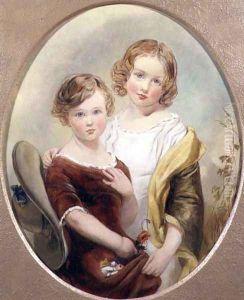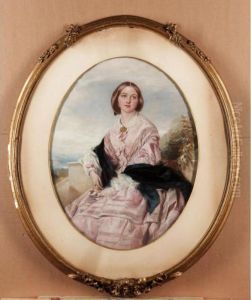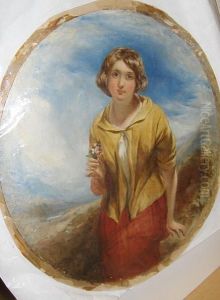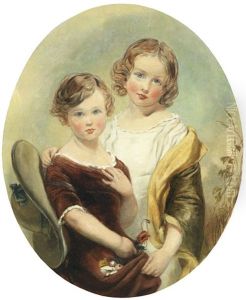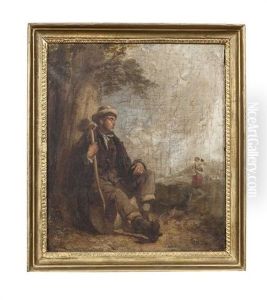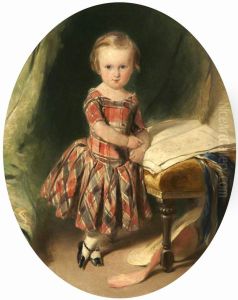Thomas Crane Paintings
Thomas Crane, not widely known as a prominent figure in art history, was actually a significant influence in the 19th-century English art scene, particularly noted for his contributions to the world of design and illustration. Born in 1808, Crane's life spanned a period of significant transformation in the British art world, a time when the industrial revolution was beginning to leave its mark on artistic production and the consumption of art.
Crane's work is often overshadowed by the achievements of his son, Walter Crane, who became one of the most beloved illustrators of the Victorian era. Despite this, Thomas Crane's own contributions laid the groundwork for his son's success and helped to shape an aesthetic that would become central to the Arts and Crafts movement, which sought to bring about a resurgence of traditional craftsmanship amidst the mass production of the industrial age.
Throughout his career, Thomas Crane worked primarily as a portrait painter and illustrator. His works exhibited a keen eye for detail and a profound understanding of color and composition, traits that he would pass on to his children. His illustrations often featured themes of nature and allegory, which were popular in the Victorian era, and he had a particular talent for capturing the essence of his subjects with both realism and empathy.
Crane's influence extended beyond his own artistic output. He was a teacher and mentor to many young artists, including his own children, fostering a love of art and design that would carry on through generations. His role in the early education of Walter Crane and his siblings cannot be overstated; Thomas not only taught them the basics of drawing and painting but also instilled in them a passion for beauty and the importance of art in everyday life.
Thomas Crane's death in 1859 marked the end of an era, but his legacy lived on through his children and those he influenced. His work and teachings contributed to a burgeoning artistic movement that sought to counteract the soullessness of industrialization with beauty, craftsmanship, and a return to nature. Though not as celebrated as his son, Thomas Crane's impact on the Victorian art world and his role in the foundation of the Arts and Crafts movement make him a noteworthy figure in the history of 19th-century English art.

